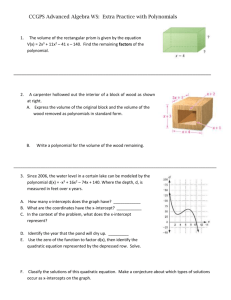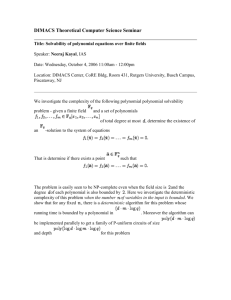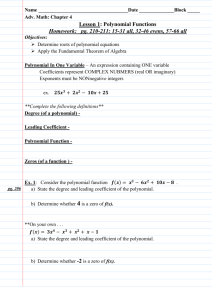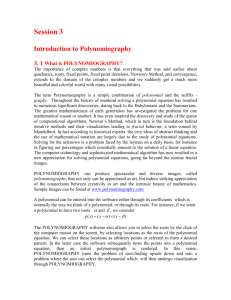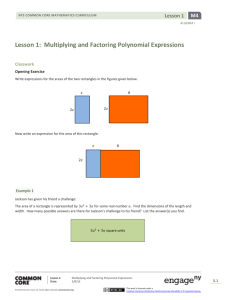2.9 SOLVING POLYNOMIAL EQUATIONS
advertisement
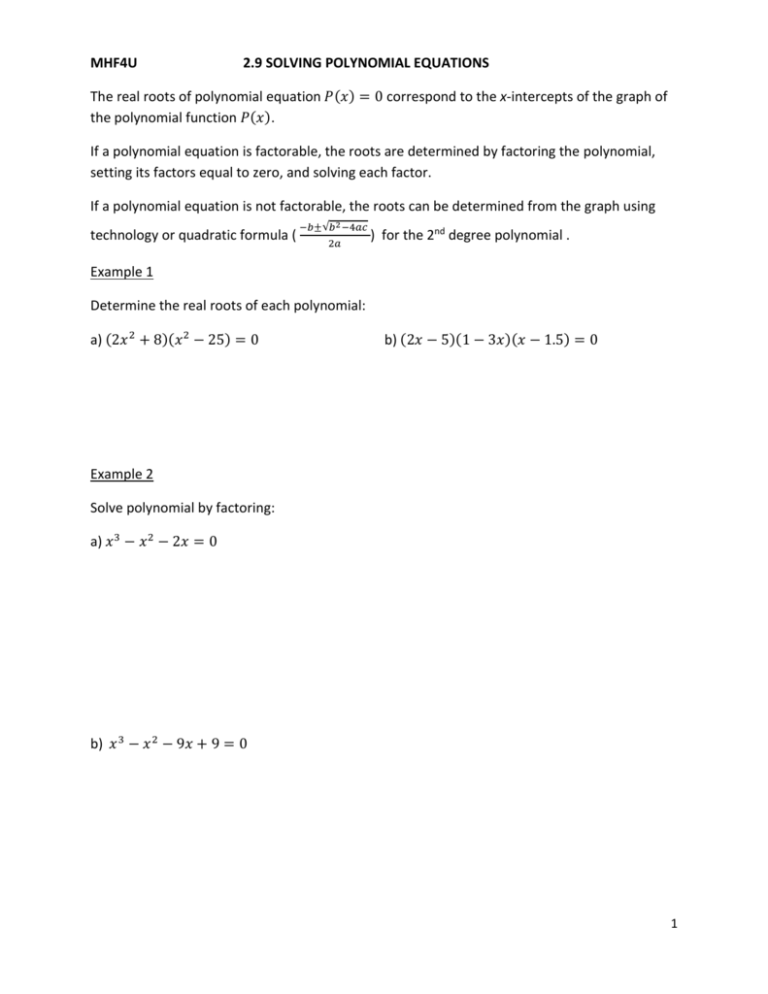
MHF4U 2.9 SOLVING POLYNOMIAL EQUATIONS The real roots of polynomial equation 𝑃(𝑥) = 0 correspond to the x-intercepts of the graph of the polynomial function 𝑃(𝑥). If a polynomial equation is factorable, the roots are determined by factoring the polynomial, setting its factors equal to zero, and solving each factor. If a polynomial equation is not factorable, the roots can be determined from the graph using technology or quadratic formula ( −𝑏±√𝑏2 −4𝑎𝑐 2𝑎 ) for the 2nd degree polynomial . Example 1 Determine the real roots of each polynomial: a) (2𝑥 2 + 8)(𝑥 2 − 25) = 0 b) (2𝑥 − 5)(1 − 3𝑥)(𝑥 − 1.5) = 0 Example 2 Solve polynomial by factoring: a) 𝑥 3 − 𝑥 2 − 2𝑥 = 0 b) 𝑥 3 − 𝑥 2 − 9𝑥 + 9 = 0 1 Example 3 Solve each of the following: a) 𝑥 3 + 9𝑥 2 + 13𝑥 + 5 = 0 b) 𝑥 3 − 2𝑥 − 4 = 0 Practice/Homework: pg. 110-111 # 1a,e,3a,c,e,4a,c,e,6a,b,7a,b,8,b,d,10,11 2





